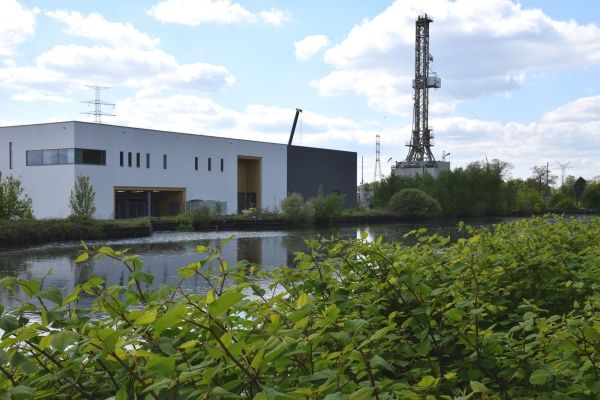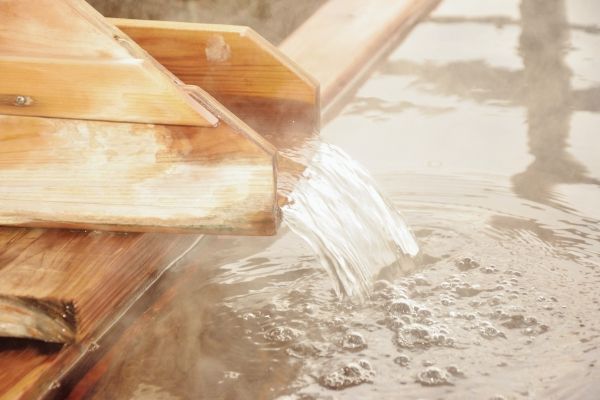
Why geothermal energy?
Every energy source has advantages, disadvantages and risks. This is no different with geothermal energy, but compared to the extraction of fossil fuels and even other sustainable or renewable energy sources, the advantages certainly outweigh the potential disadvantages or risks. Make the comparison yourself.
The benefits of geothermal heat
Renewable
From a human perspective, geothermal heat is inexhaustible and can therefore be used indefinitely over time.
Climate-neutral
When extracting geothermal heat, there is no burning of fossil fuels and also no greenhouse gas emissions.
Any CO₂ released along with the hot water is collected and re-dissolved in the brine or used, e.g. to produce building materials or methanol.
No environmental impact
A geothermal or geothermal power plant is quite small and compact and, due to this limited space requirement, does not have a major impact on the environment. Noise pollution is also limited. When it is only about heat extraction - and thus not about generating electricity - this power plant is noiseless. Which is therefore good for people and animals.
Price stable
The biggest costs are setting up the geothermal power plant and building a heat network. However, operating the plant is quite cheap and the cost price of geothermal heat is independent of fluctuations in the energy market.
Anchoring companies
Not only does this compact power plant create jobs, it can be a competitive advantage or added value for companies with high energy demand. This of course depends on the location of the geothermal power plant, but its presence thus anchors businesses.
Disadvantages
Site-dependent
Geothermal energy is not possible everywhere and has a different cost depending on the location. Hence a geographical spread is necessary, within Europe and also within Belgium.
Cold front reaches the production well
The cooled water pumped back into the earth via the injection well draws heat from the deep layer of earth where the production pump also pumps the hot water. If the two wells are too close together, the water does not have enough space and time to return to the required temperature, but after several decades, the layer of earth that heats the water may also no longer be as hot as it was at the beginning at the level of the production well. Then the efficiency of the plant drops.
However, there are also several solutions for this:
- Dynamic models allow the evolution of the reservoir to be predicted, taking into account specific geology.
- Not every geothermal power plant has to run all year round: if we speak of only providing heat via a heat network, the use during autumn and winter is much higher than in spring and summer. That way, the cold front reaches the production well much slower or not at all. When heat extraction stops, the situation recovers itself.
Possible risks
The geological risk
As cited for geothermal extraction methods, this depends on three criteria:
- The amount of water available
- The average permeability of the rock in which the water is located
- The temperature of the water
As a result, there is a risk of unsuccessful well drilling, which can hinder project funding. Studying geothermal energy also means that the success of deep geothermal can be increased:
- We are increasing our knowledge of the deep subsurface.
- Targeted subsidies are available.
- There is also insurance for this geological risk.
Seismicity
One consequence of pumping back the cooled water that must be taken into account is the seismic vibrations that can occur in the deep subsurface. Pumping and re-injecting the water is done under pressure. This and the fact that rock that cools shrinks a little can cause movements in the deep subsurface.
In Flanders, these underground vibrations are closely monitored from the start: during drilling, before the test phases and also while the power plant is running, the subsurface is studied using various seismometers. A subsequent warning system also allows, if necessary, to study the slightest deviation and also shut down the power plant. The more this ground activity can be studied, the better the technology can be aligned with reality and the more the risk can be reduced.
Contamination groundwater layers
Between different groundwater layers, there are differences besides the depth at which they are located:
- The volume of available water
- The water permeability of the rock
- The temperature
- The chemical composition of the water
This last point poses a potential risk: the deeper one drills, the saltier the water becomes. So when drilling several kilometres deep to the layer with the desired temperature, these wells pass through other groundwater layers. To prevent contamination - so that saltier water from the deeper layers reaches the higher layers - the wells have a watertight wall made of steel and cement. The condition of this wall is checked regularly.







